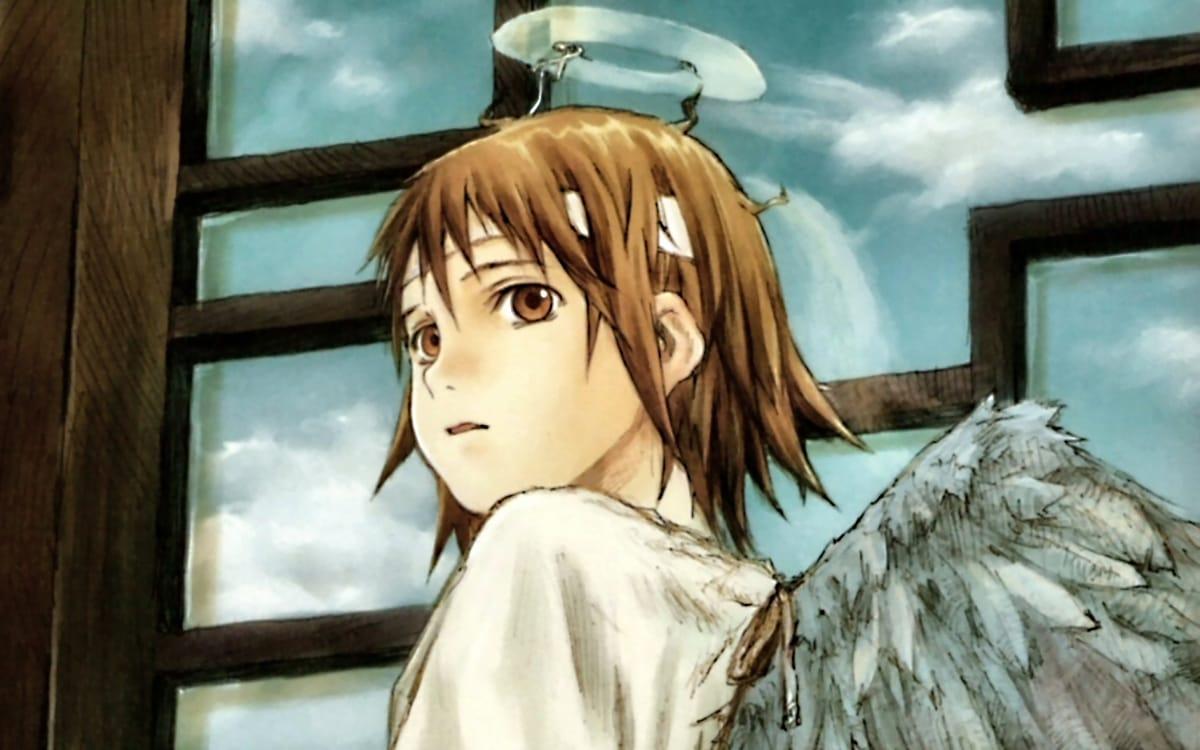
What comes to mind when you see the word “anime”? Chances are, the list probably includes such tropes as giant robots, ridiculously proportioned female characters wielding ridiculously large weapons, angst-ridden male characters, lots of sex, lots of violence, and lots of violent sex. This is understandable, when you consider most of anime titles that have informed the American awareness of the art-form. However, anime, along with manga, is an incredibly diverse field, with titles and stories geared for almost every demographic and proclivity… for better or worse.
Thankfully, though, the number of anime titles becoming (legally) available in the States is consistently growing, and with that comes more publicity for its diversity, as well as a chance for some of the more unconventional anime titles to get some awareness. Case in point: Last week, I saw that Haibane Renmei, one of my favorite anime series, is now streaming on Hulu.
Originally a dōjinshi, or self-published manga, by Yoshitoshi ABe (Serial Experiments Lain, Texhnolyze), is an enigmatic title that follows a group of angel-like beings called “haibane.” The haibane, along with normal humans, reside within a town called Glie that is surrounded by a giant wall that no one is allowed to go beyond, or even touch. Though they look like angels, complete with halos and wings, the haibane don’t appear to have any supernatural powers. Instead, they live by a strict set of rules that includes working among the humans without monetary compensation, wearing second-hand clothes, and living in abandoned buildings. Oh, and they’re born, fully grown, from giant cocoons.
The series follows the newest haibane, an pensive young girl named Rakka, as she tries to figure out who and what she is, make friends with the other haibane, find her purpose in life, and perhaps even uncover the mysteries of the wall and the Toga, a monastic like group that are the only people allowed to pass beyond the wall.
Much of the series’ strength lies in its ambiguity. Though Haibane Renmei starts off on a humorous note courtesy of Rakka’s awkward development as a haibane, it slowly becomes increasingly mysterious, and even haunting, as haibane begin disappearing and she encounters the Toga and their leader, known only as the Communicator. Along the way, the series explores such themes as community, sin, and redemption in a way that, while not exactly Biblical — see, for instance, the series’ creation myth — nevertheless contains much that Christians can appreciate.
However, to try and draw strict theological parallels misses the point of a series so intent on being mysterious, I think. ABe has even admitted that his use of angelic imagery was more for aesthetic than spiritual reasons. The series is ambiguous enough that it’s possible to derive your own conclusions; indeed, the series encourages this, though never in a way that feels cheap or overly melodramatic. It helps that the world of Haibane Renmei is extraordinarily detailed, from the European flavor of the town to the culture of the haibane to the various personalities of Rakka’s fellow haibane. Animation-wise, the series is quite excellent — though not quite up to Studio Ghibli levels (what is?), it’s still a lovely series to behold — and it’s aided by an appropriately atmospheric and poignant soundtrack.
Several years ago, I had the fortune of leading a screening of Haibane Renmei at the Cornerstone Festival. It’s a series that lends itself well to thoughtful discussion: not because it’s heavy-handed or didactic, but because of the way in which it pulls you into its world via the storytelling. If you’ve grown tired of “typical” anime fare — if you’re feeling a little burned out on giant robots, moody protagonists, and whatnot — then Haibane Renmei, with all of its enigmas and spiritual overtones, might just represent a breath of fresh air.
This entry was originally published on Christ and Pop Culture on .